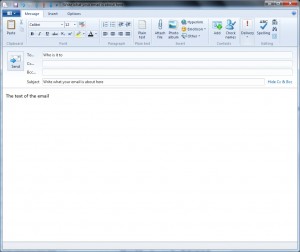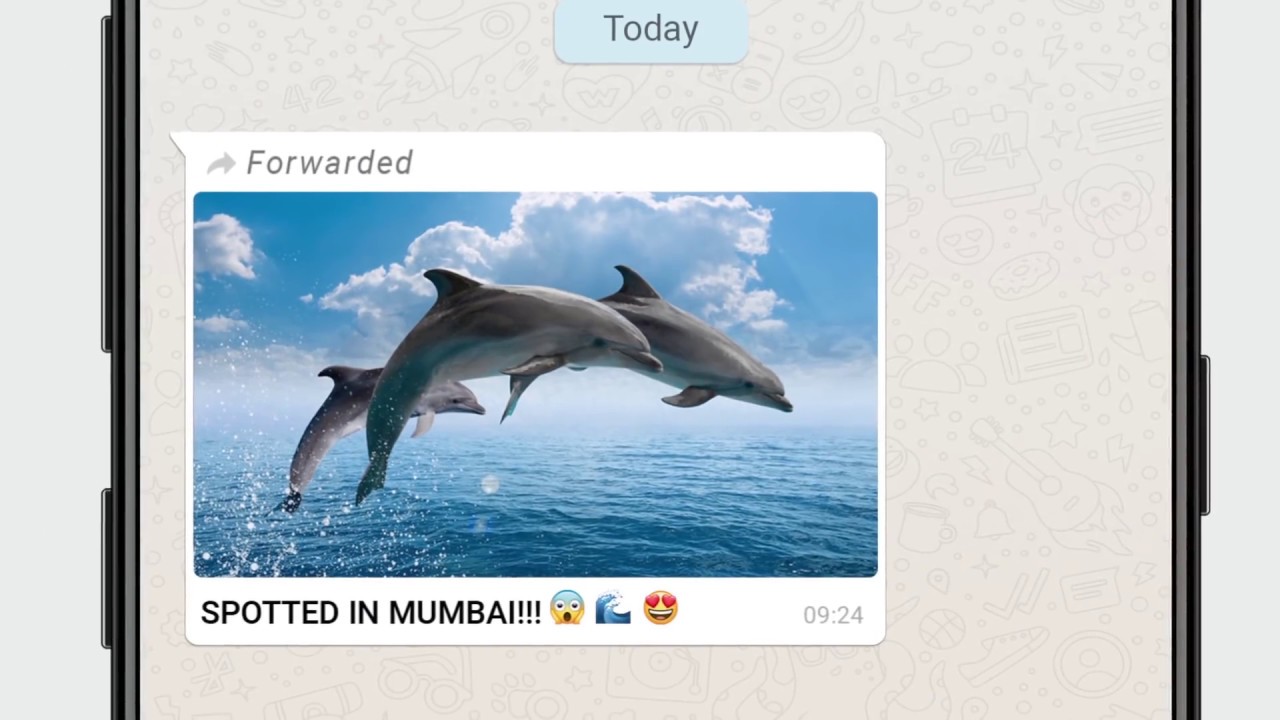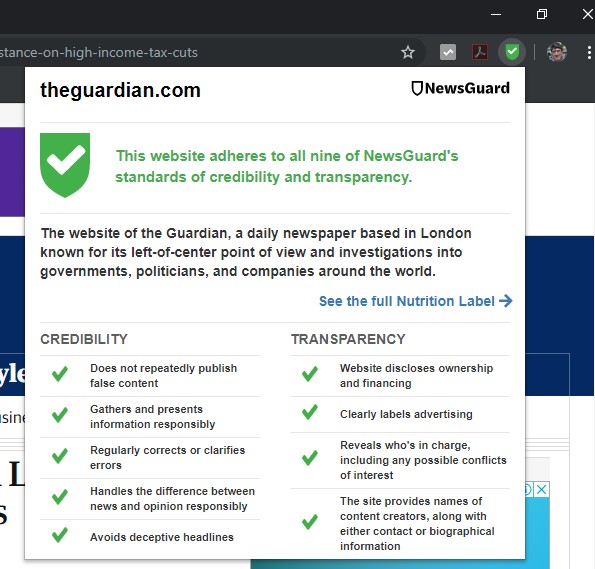In the first article of this series, I talked about the two different classes of email interface – the client-based interface and the Webmail which is the Web-based interface.
Then I talked about the different folders and views that are part of an email user interface such as the Inbox, Outbox and the Sent Items folder and the Unread Items and Starred Items / Flagged Items view.
Now I will be talking about the basic tasks associated with using email such as reading new email and sending out email. This will also include extra tips to get the most of your email.
Tasks
Sending a new email
- If you are sending a new email, you just click on “Compose”, “New Message” or “New Email”. It may be a button with an envelope and a + symbol on it. This gives you a blank form to work with.
- You enter the email address of the correspondent or, in most cases, their name if you have the correspondent in your Contacts list, in to the “To” area.
- You can add extra email correspondents if you intend to send it to other people. As well, you can add other email correspondents in to the “Cc” field which stands for “Courtesy Copy” or “Carbon Copy”. There is also a “Bcc” field where you can enter a correspondent’s email address or name but the correspondents who are in the “To” or “Cc” fields don’t see the fact that you sent a copy to the “Bcc” correspondents.
- Then you enter the subject of the email in the “Subject” field. It is a good practice to use this so that the correspondent can know what the email they are receiving is all about.
- Subsequently you write the text of your message in the large “Message” field.
In most email user-interfaces, you have the ability to vary the way your text looks using the formatting buttons typically located above the message form. Here, you could do this before you type the message or select the text you want to modify and use these buttons to modify the look.
As you work, the email will be held in the Drafts folder and, with some email interfaces, you may be required to expressly save or delete the email if you close it. - When you are satisfied with the message you are to send, click the “Send” button. The message will appear in the Outbox as it is being sent, then will appear in the Sent Items folder once it is sent.
Reading an email
This task is the simplest to do in that you just visit your Inbox and click on emails that you want to read.
New emails that haven’t been read will typically appear in bold and some email user interfaces will provide a view or filter that shows only the new emails.
You can mark important emails as “starred” or “flagged” as a way of bookmarking them for later reference. When you need to come back to them again, you select the “Starred Items” or “Flagged Items” view to see just these emails in your Inbox,
Replying to an email or sending the email to someone else
- When you read an email and want to reply to it, you just click the “Reply” button. On the other hand, if you just need to send it to someone else, you just click the “Forward” button. The “Reply All” inserts the addresses that a multi-destination email was sent to in to the “To” line and is best used if you really intended the contents of your reply to be seen by the other correspondents.
- You will see a “new-email” form with the text of the original message set in a manner to identify it as that. The Subject will be the same but with “Re:” in the case of a reply or “Fw:” in the case of a forwarded message. The cursor will be position in a blank space above this text.
As well, the name or email of the sender will be placed in the “To: field” of this message if you are replying to the email. - Here, you write the text of your reply or explanatory text for the forwarded email. The process for sending this email will be the same as for a new email.
Deleting emails
When you delete an email in most email user interfaces, it will be moved to a “Deleted Items” or “Trash” folder and won’t appear in your Inbox. You can come back to that email or move it back to your Inbox.
But when you delete emails from the “Deleted Items” folder, they will be gone for good. Similarly, if you click on an option to “Empty Deleted Items”, all the emails in this folder will be gone for good.
Similarly, there is an option to permanently delete an email from the system when you see it in the inbox. This may be in the form of selecting the email and choosing the “Delete permanently” option or, with most desktop email clients, selecting the email and then pressing Shift and Delete on the keyboard at the same time.
Printing out an email
If you want hard copy of your email, there are different ways to go about it depending on the email user-interface you are using.
If you are using a client-based email interface, you just simply view the email then select the print option in your email client. This typically would be done by clicking “File-Print” or by pressing Ctrl–P / Command–P on your keyboard; then selecting the printer you normally use then clicking the “Print” button.
For Webmail users, they just look for a “Print” option on their Web-based user interface which will provide the email in a printable form without any extra display clutter such as columns, banner ads, etc. Then, depending on the interface, you will start the print process by clicking a “Print” option on the printable view.
Some Webmail interfaces may immediately cause the browser to show the printout user interface so you can start the print process. But there are some other Webmail user interfaces that work properly with modern Web browsers by properly setting out the email for printing when you start printing using the Web browser’s print command.
Junk-mail filtering
Most Web and desktop email interfaces use a “junk-mail” filter function which keeps junk email a.k.a. spam out of your inbox. Typically they use one of varying algorithms to determine if the email is junk or not and, if it is junk, the interface will direct the email to a “junk-mail” folder.
Here, you can override this setting for particular contacts that you deal with by using a method specific to the interface. In most client-based interfaces, this may require you to right-click /Ctrl+click the email address and select “mark as safe”, “mark as trusted” or a similar option for that address.
As well, it may be worth checking this Junk Mail folder if you find that the business email you were expecting had not shown up in your Inbox when you were expecting it.
Tips
Using email in conjunction with instant-messaging, mobile-phone texting or social networks
Some of you may catch on to instant-messaging programs, social-network messaging functions or mobile-phone texting services and forget that email does exist. Here you may become tempted to write longer messages fit for email services using these services; and I have covered this topic on this site previously as I have had to help users who were wanting to take material in their conversations further such as to prepare legal release documents.
But the email still has its role even if you use these services as your online communications tool. Most of the instant-messaging systems and social networks don’t have a way of taking the text of a message further than the conversation you have with your correspondent. This may be important if you want the message to be printed or used as part of a document for example.
Here, you need to make sure that you know the latest email address of your regular correspondents that you talk to on Skype, Facebook or Windows Live Messenger; and have these addresses in your email interface’s Contacts List / address book. Then, if you want to pass information that is to be taken further than the conversation you have in this application, you send that information using email.
Then your chat / messaging session on Facebook or your texting session on your mobile phone can just exist for conversation-style text communication.
Cleaning out your email inbox
If you have to clean out your email inbox, delete the newsletters and any automatically-generated confirmation and notification emails first. Then empty the “Deleted Items” folder.
If there are receipts that were generated as part of an e-commerce transaction, print these out or make PDFs of them using a “print-to-PDF” program so you can reconcile them with your credit-card statements. Then you can delete them. This is important with businesses and others who need to retain transactions over a significant number of years for the taxman.
Conclusion
These articles, which are written to work for most Web-based and client-based email interfaces in current use, will help you to understand how to get the hang of your email system.





